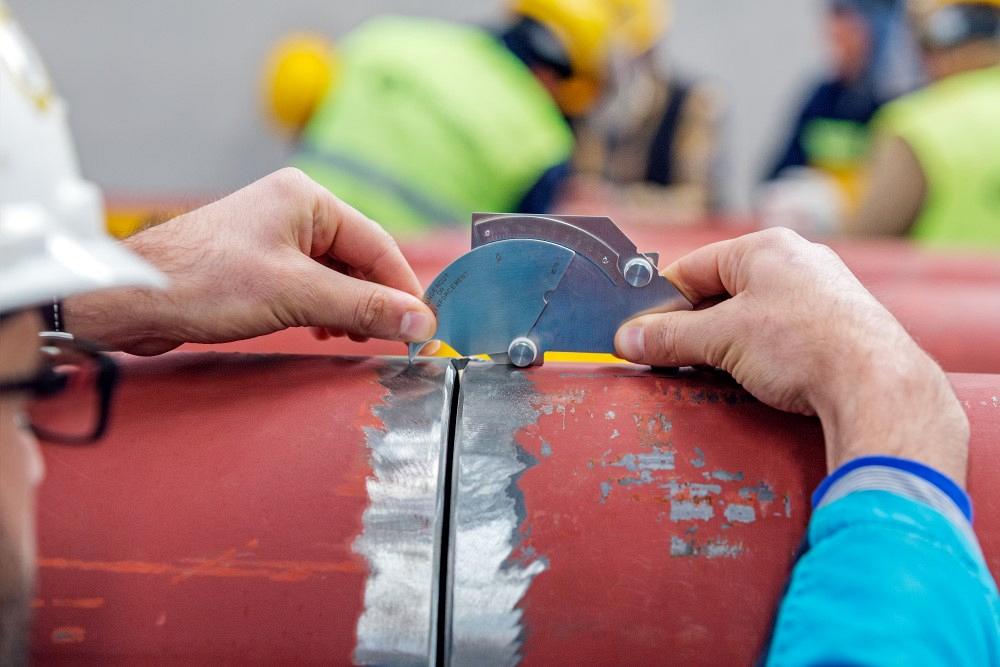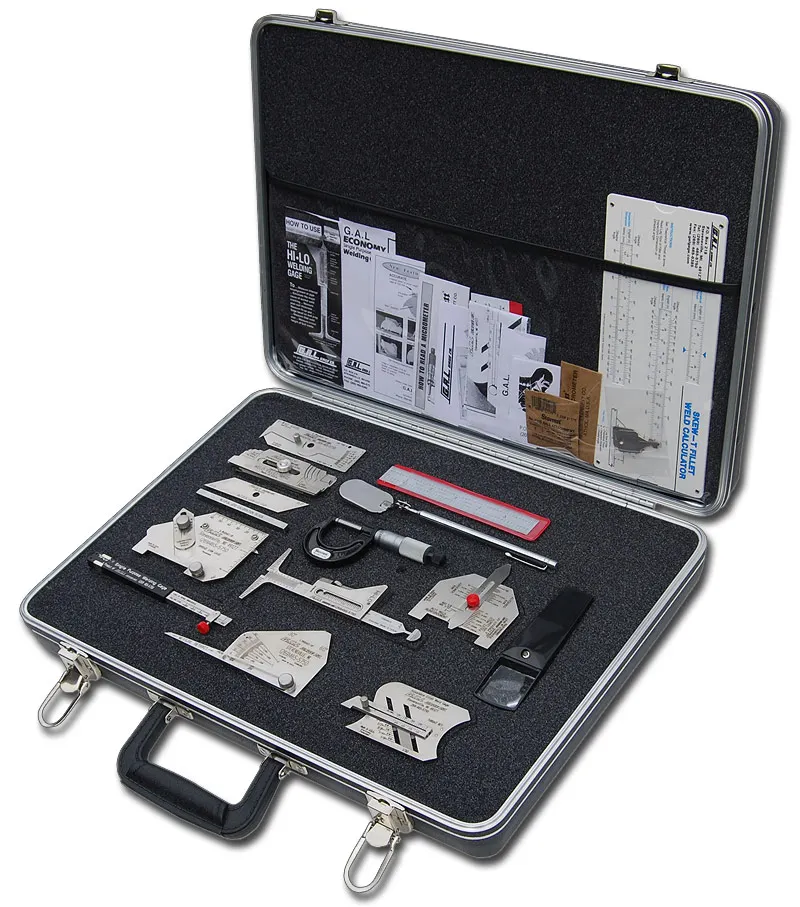Navigating Welding Inspection Gilbert Arizona: Crucial Insights for Market Professionals
The Impact of Strenuous Welding Examination on Market Standards: Promoting Safety And Security, Reliability, and Compliance Throughout Various Fields
The duty of rigorous welding inspection is increasingly recognized as an essential part in boosting market requirements, where conformity, dependability, and safety take priority across diverse sectors. What transformations might we prepare for in welding approaches as the demand for top quality and security magnifies?
Importance of Welding Inspections
Identifying the vital role of welding inspections in preserving top quality and safety and security standards, sector professionals focus on these evaluations to make certain structural integrity. Welding inspections function as an essential checkpoint in the construction process, recognizing problems that can jeopardize the toughness and security of bonded frameworks. By systematically examining welds, inspectors can spot problems such as incomplete penetration, porosity, and cracks, which might not show up to the naked eye.
The value of these evaluations expands past mere conformity; they are essential for securing lives and securing investments. In crucial markets such as manufacturing, building, and aerospace, a solitary damaged weld can lead to catastrophic failures, leading to both monetary loss and human casualties. As a result, executing strenuous inspection protocols mitigates these threats and improves general project reliability.
Furthermore, consistent welding inspections cultivate a society of top quality throughout organizations, encouraging welders to abide by finest methods and preserve high standards in their job. This dedication to quality not only boosts operational efficiency however also strengthens the reputation of business within their particular markets. Thus, welding evaluations are indispensable in promoting safety and security, dependability, and conformity throughout different markets.
Trick Market Standards and Regulations
The structure of welding evaluations is underpinned by a durable collection of industry requirements and regulations that control practices throughout various sectors. Key institutions, such as the American Welding Society (AWS) and the International Company for Standardization (ISO), develop standards that ensure top quality and safety in welding procedures. As an example, AWS D1.1 outlines important needs for welding steel frameworks, while ISO 3834 specifies high quality demands for combination welding.
Along with these particular requirements, industry policies like the American National Standards Institute (ANSI) and Occupational Safety And Security and Health Administration (OSHA) mandates additionally enhance conformity by setting security methods and operational finest practices. These regulations are essential in industries such as building and construction, aerospace, and production, where welding honesty is paramount.
In addition, sector-specific standards, such as those from the American Culture of Mechanical Designers (ASME) for stress vessels, give extra layers of scrutiny to make certain that welds meet stringent safety and security and performance standards. Adherence to these requirements not only assists in regulatory conformity however additionally promotes a society of quality and integrity across the welding market, ultimately guarding public welfare and boosting operational performance.

Benefits of Conformity and Reliability
Continually sticking to market requirements and policies in welding inspections returns considerable benefits, boosting general dependability and performance. The leading advantage is the assurance of top quality in bonded joints, which directly contributes to the safety of structures and equipment. Compliance with established requirements reduces the danger of failing and disastrous incidents, thereby safeguarding both human life and useful possessions.
Additionally, companies that focus on strenuous welding inspections cultivate a society of liability and professionalism. This dedication not only strengthens the online reputation of the firm yet likewise infuses self-confidence in customers and stakeholders regarding the stability of products and services. Reliable welding processes lead to decreased costs related to rework, repair services, and possible legal obligations stemming from substandard workmanship.
Additionally, preserving compliance with industry standards helps with smoother regulatory interactions, as organizations can conveniently show adherence to essential protocols (Welding Inspection Gilbert Arizona). This positive method can result in beneficial partnerships and chances within the sector, as well as access to new markets
Challenges in Welding Examination
Navigating the complexities of welding evaluation offers a myriad of challenges that can hinder conformity with sector criteria. One significant barrier is the irregularity in assessment strategies and technologies. Various fields may utilize diverse methods, leading to disparities in the examination of weld high quality. The lack of standardized training for inspectors can result in varied read more analyses of examination standards, which may endanger security and reliability.
One more obstacle depends on the accessibility of innovative evaluation tools - Welding Inspection Gilbert additional reading Arizona. While modern technologies such as ultrasonic testing and radiography can improve detection abilities, their execution might be limited by price or availability, specifically in smaller procedures. This difference can cause a reliance on less efficient evaluation methods, enhancing the threat of unseen problems
In addition, the fast-paced nature of modern manufacturing typically stress assessors to focus on rate over thoroughness, potentially neglecting essential defects. Finally, regulatory compliance can be daunting because of the progressing nature of sector criteria, leaving organizations battling to keep up with the current demands. These difficulties necessitate continuous improvement in assessment techniques to ensure the integrity of welded frameworks throughout various industries.
Future Trends in Welding Practices
Arising technologies and advancing approaches are set to transform welding techniques in the coming years. Advancements in automation, such as robot welding systems, are obtaining grip, improving precision and efficiency while minimizing human mistake. These systems will certainly not just quicken production but also promote constant quality assurance, addressing several of the difficulties faced in manual welding.
Additionally, the assimilation of expert system (AI) and machine knowing into welding procedures is positioned to transform inspection and monitoring. Real-time information analytics will make it possible for predictive upkeep, permitting aggressive interventions that lower downtime and increase safety. Furthermore, boosted truth (AR) and virtual truth (VR) innovations are ending up being important in training welders, giving immersive experiences that enhance skill growth without the threats connected with traditional techniques.
Sustainability is also a vital trend, as markets seek greener techniques. The adoption of green materials and approaches, together with energy-efficient equipment, will likely become common. As markets adapt to these adjustments, the emphasis will certainly shift toward better conformity with security and ecological guidelines, guaranteeing that welding methods not click to find out more just fulfill existing standards however likewise pave the method for a more secure and even more lasting future.

Final Thought
Finally, rigorous welding evaluations substantially boost industry standards by ensuring safety, reliability, and compliance throughout numerous fields. By methodically recognizing defects and sticking to developed guidelines, these evaluations reduce threats linked with structural failures. The promo of liability amongst welders causes greater high quality outcomes, promoting trust within neighborhoods. As markets remain to focus on functional integrity, the significance of complete examinations will only enhance, inevitably profiting organizations and culture at large.
The role of rigorous welding evaluation is increasingly identified as a crucial component in improving industry criteria, where dependability, safety and security, and compliance take priority across varied industries. Therefore, welding inspections are crucial in advertising security, integrity, and compliance throughout different industries.
Trick institutions, such as the American Welding Society (AWS) and the International Company for Standardization (ISO), establish standards that ensure high quality and safety and security in welding procedures. AWS D1.1 describes vital needs for welding steel frameworks, while ISO 3834 specifies high quality needs for blend welding.
In verdict, rigorous welding assessments significantly improve industry standards by guaranteeing security, integrity, and conformity throughout different fields.